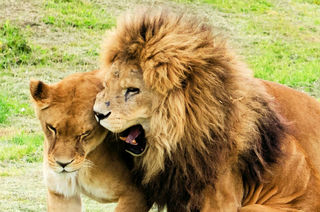Intelligence
Think Like a Cat
Recent studies of cat “intelligence” raise more questions than answers.
Posted November 17, 2016
The human brain is a wonderful and complex organ, whose workings are only reluctantly divulging themselves to scientists. George H. W. Bush’s “Decade of the Brain” initiative ended a long 17 years ago and was subsequently replaced by Obama’s “The New Century of the Brain.” One way in which biologists can contribute to this endeavor is by examining the brains of other mammals, in attempts to discover what features make the human brain unique. From such comparative research has emerged the idea that one of the evolutionary pressures driving the enlargement of our brains, and our frontal lobes especially, was the need to process ever-greater quantities of social information (as supported by evidence from comparisons with other primates).
Unfortunately, it turns out that the brains of non-primate mammals seem to have fewer similarities to our own than we might have hoped. True, all mammalian brains are constructed from the same kit of parts, but it’s becoming clear that the functions that some of those parts actually perform may vary considerably from one kind of animal to another. At the 1 gram stage of fetal development, the primate brain has already taken a different path to that of all other mammals. Carnivores (which include domestic dogs and cats) have proportionally much larger olfactory bulbs than those of primates, reflecting their much greater reliance on scent to inform them about the outside world, while their prefrontal cortices, the “thinking” part of our brains that cover the frontal lobe, are much smaller. Does this mean that dogs and cats “think” less than we do? Well, it might, but it would be helpful if we knew what mammals apart from primates used their frontal lobes for. And is it inconceivable that they might use some other part of their brains for “thinking”?

A recently published study of the skulls of various members of the cat family has highlighted just how little we know about what it is like to be a felid. All of the cat family, from the tiny black-footed cat to the lion, have very similar brain cavities, presumably because they are all forced, by their unusual nutritional needs, to be predators. They therefore make good candidates for examining how minor variations in their lifestyles might affect the shape of their brains, and therefore, by implication, the way they function. There are none of the complications that can arise, for example, when some members of a group of mammals are aquatic while others live on land, or where skull shape is determined by how much effort is needed to chew the species’ typical diet.
Unfortunately the cat family is not a particularly good place to look for the effects of social complexity on the structure of the brain, since only one species – the lion – lives in mixed-sex groups, and in only one other – the cheetah – do males form permanent groups. In the wild, all the other cats are believed to live alone, although in the study in question Felis silvestris is classified as solitary, even though one of its subspecies, the domestic cat, can form permanent female-centered groups.
The data presented in the paper does not establish any firm link between social complexity and the size of the frontal lobe. True, the largest frontal lobes (corrected for size of the animal) are to be found in female lions, but the male (and female) cheetah have smaller frontal lobes than the norm. Jaguar and leopard, both solitary species, have frontal lobes comparable in size with those of a male lion, and significantly larger than those of other solitary species such as the tiger and the cougar.
It’s arguable that with the possible exception of female lions, social behavior in the felids just isn’t difficult enough to warrant an increase in processing power. Although biologists like to make contrasts between “social” and “solitary” species, the reality is that most female cats live with other cats – their offspring – for a significant proportion of their lives. For example, “solitary” cheetah females may keep their cubs with them for over a year, and the cubs, both male and female, continue to interact with one another at least until they become adult. Thus all cats may need a basic level of social intelligence to survive to adulthood, and maybe this is also enough to allow them to form stable groups when they become adult, should circumstances permit.
There’s also some debate among biologists as to whether “social intelligence” is really something that can be distinguished from general cognitive abilities; for example, large frontal lobes might permit an animal to live either in a complicated social system or in a complicated physical environment that requires a higher than average amount of problem-solving. In another recent paper, lions were found to outperform tigers in opening a puzzle-box, with leopards in between, precisely the order expected if they were using their frontal lobes to solve the problem. It’s dangerous to construct a hypothesis based on only three species, but another study that included 13 felids and another 26 species of carnivores came to a similar conclusion – that larger-than-expected brains help with problem-solving, but are found both in social and in solitary species.
It seems that a great deal remains to be known about how the felid brain works, but there is every indication that there are fundamental differences between our cats’ brains and our own. They certainly use their frontal lobes to analyze odors, which must include those characteristic of their owners. Whereabouts in their brains they translate such information into thoughts about their relationships with us is still unclear. Their subjective world may therefore be not just simpler than our own – a reasonable assumption, given the overall size of their brains – but also qualitatively different. We therefore need to guard against the kind of lazy anthropomorphisms that brand cats as “fickle” or “lazy” or “cruel” or “aloof”, based on our primate-centered interpretation of their behavior. And here’s another thought: how, in their terms, might they be categorizing us?


